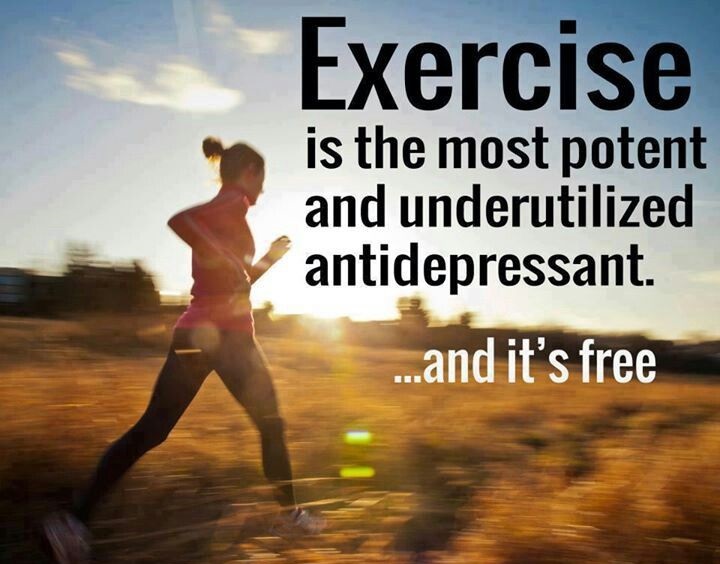
According to a 2006 study, Tai Chi regulars had a lower risk of falling. This might be because taichi emphasizes fluid movement and yoga focuses on posing. This exercise is good for healthy adults as well as those who have chronic conditions like diabetes or heart disease. Classes can be taken at community centers, gyms, or specialized studios. Many schools offer customized fitness programs and a therapist in some tai-chi schools.
Studies have been done to determine the effect of Tai Chi on high blood pressure. Tai Chi, along with a decreased sodium intake and weight loss may help lower blood sugar. It may also help lower cholesterol and other levels in the body. Some studies also show that Tai chi reduces the risk of heart disease. These results are preliminary. A more thorough study is necessary to confirm the ancient exercise's benefits.

A variety of illnesses may benefit from tai chi, according to research. Deep breathing is thought to improve mental health. A Stanford Medicine article states that deep breathing can decrease symptoms of anxiety, stress, and depression. The exercises increase brain focus, and even decrease the chance of suffering a stroke. Tai chi is a great option for people suffering from a variety of conditions.
Tai chi has long been associated positively with the mental health and well-being of practitioners. Although there isn't much evidence supporting this connection, it seems like Tai chi has a strong association with mental health. The 2010 meta-analysis of 40 studies failed to come up with conclusive conclusions. Recent research on Tai chi, cognition and other related subjects has yielded promising results. A systematic review of 2,553 adults who had been practicing Tai Chi and were suffering from cognitive impairments was conducted in 2014. It was found that tai-chi exercises have benefits for both mental and physical well-being.
Another study discovered that taichi enhanced the functioning the prefrontal cortex. This brain part is responsible for higher-level thinking. Participants in the study of tai Chi experienced a reduction or improvement in their symptoms of fibromyalgia and a better mood and concentration. Tai chi is associated with a lower likelihood of a fracture of the hip.

Tai chi could help with blood pressure, energy and digestion. It can also reduce pain. Tai chi's meditative aspect is also thought to improve general health. Tai chi's success may be due to the mind-body link between taichi and meditation.
FAQ
What can be done to increase your immune system's effectiveness?
The human body is made up of trillions and trillions of cells. Each cell is responsible for creating organs and tissues with specific functions. When one cell dies, another cell replaces it. Cells communicate with one another using chemical signals called hormonal hormones. Hormones regulate all bodily functions from growth and developmental to metabolism and immunity.
Hormones are chemical substances that glands secrete throughout the body. They travel through our bloodstream and act as messengers, controlling how our bodies function. Some hormones are produced within the body while others are externally manufactured.
Hormone production begins when a hormone-producing gland releases its contents into the bloodstream. Once hormones have been released, they travel through the body until reaching their target organ. Some hormones are only active for a brief time. Other hormones can remain active longer, and they continue to affect the body's functionality even after leaving the bloodstream.
Some hormones are made in large quantities. Others are made in small quantities.
Certain hormones can only be produced at specific times in life. Estrogen is one example. It's produced in puberty, pregnancy and menopause. Estrogen aids women in developing breasts, maintaining bone density and preventing osteoporosis. It also promotes hair growth and keeps skin smooth and soft.
What are 7 tips for a healthy and happy life?
-
Be healthy
-
Exercise regularly
-
Sleep well
-
Get plenty of water.
-
Get enough sleep
-
Be happy
-
Smile often
How often should I exercise?
Exercise is essential for maintaining a healthy lifestyle. There is no set time limit for exercising. Finding something that you love and sticking with it is the key.
When you exercise three times per week, aim for 20-30 minutes moderate intensity. Moderate intensity will mean that you'll continue to be exerting yourself afterward. This type works out burns around 300 calories.
If you prefer to walk, go for 10 minute walks four days a week. Walking is easy on the joints and has low impact.
Jogging for 15 minutes three days a week is a good option if you prefer to run. Running is a great way to burn off excess calories and build muscle tone.
Begin slowly if your are not used to working out. Start with just 5 minutes of cardio a few times a week. Gradually increase the time you do cardio until your goal is reached.
Why does weight change as we age?
How do you know if your bodyweight changes?
When there is more muscle mass than fat, weight loss can occur. This means that you must consume more calories than you use daily. Activity levels are the most common reason for weight loss. You can also lose weight due to stress, illness, pregnancy, hormonal imbalances and certain medications. When there is more fat than muscles, it's called weight gain. It occurs when people consume more calories each day than they use. Overeating, increased physical activity and hormonal changes are all common reasons.
We eat less calories than we burn, which is the main reason our bodies lose weight. The main reason we lose weight is because we exercise more often. This increases our metabolism rate and burns more calories each day. However, this doesn't mean that we'll necessarily get thinner; what matters is whether or not we're losing fat or gaining muscle. We will lose weight if we burn more calories than we consume. However, if we consume more calories than we burn, we end up storing them as extra fat.
As we age we tend to be slower in moving and thus we don't move nearly as much. We also tend not to eat as much food as we used to when we were younger. Also, we are more likely to gain weight. However, our muscle mass is more important than we realize and makes us appear larger.
If you don't weigh yourself every week, it's impossible to determine how much weight has been lost. There are many ways you can measure your weight. You can measure your waist, hips and thighs as well as your arms. Some prefer to use bathroom scales, while others prefer tape measures.
To track your progress, weigh yourself once a week. Measure your waistline once per month. You can also take photographs of yourself every few years to track how far your progress has been.
Online, you can find out your height and weight. If you're tall at 5'10", and weigh 180lbs, your weight would be 180.
Statistics
- WHO recommends consuming less than 5% of total energy intake for additional health benefits. (who.int)
- In both adults and children, the intake of free sugars should be reduced to less than 10% of total energy intake. (who.int)
- The Dietary Guidelines for Americans recommend keeping added sugar intake below 10% of your daily calorie intake, while the World Health Organization recommends slashing added sugars to 5% or less of your daily calories for optimal health (59Trusted (healthline.com)
- Extra virgin olive oil may benefit heart health, as people who consume it have a lower risk for dying from heart attacks and strokes according to some evidence (57Trusted Source (healthline.com)
External Links
How To
What does the term "vitamins" mean?
Vitamins can be described as organic compounds found in food. Vitamins allow us to absorb nutrients from food. Vitamins cannot be made by the body; they must be taken from food.
There are two types if vitamins: water soluble, and fat soluble. Water soluble vitamins dissolve easily in water. Examples include vitamin C,B1 (thiamine), B2 (riboflavin), B3 (niacin), B6 (pyridoxine), folic acid, biotin, pantothenic acid, and choline. The liver and fatty tissues are home to fat-soluble vitamins. Examples include vitamin D, E, K, A, and beta carotene.
Vitamins are classified based on their biological activity. There are eight major categories of vitamins.
-
A – Essential for normal growth, and the maintenance of good health.
-
C - essential for nerve function and energy generation.
-
D – Essential for healthy teeth, bones and joints
-
E is required for good vision and reproduction.
-
K - Essential for healthy muscles and nerves.
-
P - Vital for strong bones and teeth.
-
Q - aids digestion and absorption of iron.
-
R is required for the production of red blood cells.
The recommended daily intake (RDA), of vitamins varies with age, gender and physical condition. The U.S. Food and Drug Administration (FDA) sets the RDA values.
For adults over 19 years, the RDA is 400 mg per day for vitamin A. Pregnant mothers need 600 micrograms per days because it is vital for the development and growth of their baby. Children ages 1-8 require 900 micrograms per day. Babies under one-year old require 700 mg per day. Between 9 and 12 years of age, however, this drops to 500 mg per day.
Children between the ages of 1-18 need 800 micrograms per daily for obesity, while children overweight require 1000 micrograms. Children underweight or obese will need 1200 mg per day.
Children 4-8 years old who have anemia must consume 2200 micrograms of Vitamin C daily.
2000 micrograms is the minimum daily intake for adults over 50 years old to maintain good health. Because of their higher nutrient needs, women who are pregnant or nursing need 3000 mg per day.
Adults over 70 require 1500 micrograms each day, since they lose around 10% of their muscle mass every decade.
Women who are pregnant or nursing need more than the RDA. Pregnant women require 4000 micrograms daily during pregnancy, and 2500 micrograms every day after birth. Breastfeeding mothers need to consume 5000 micrograms every day when breastmilk has been produced.